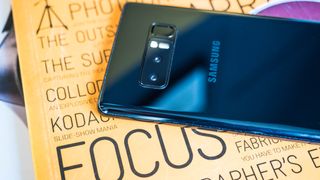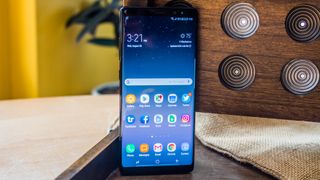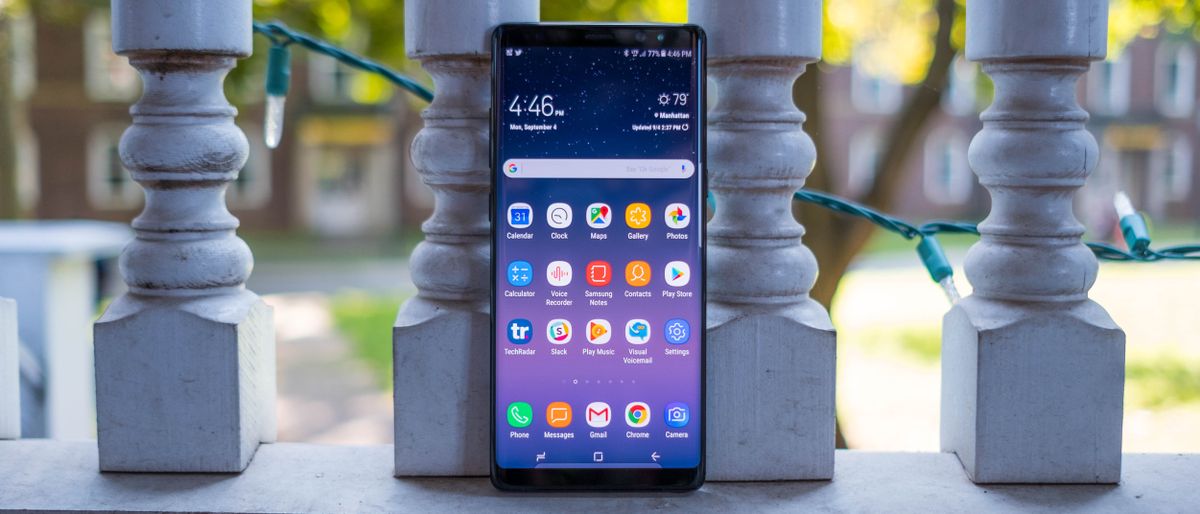Why you can trust TechRadar
Camera
- Two 12MP cameras with optical image stabilization best iPhone 7 Plus
- We loved its 2x optical zoom for telephoto pictures, portrait photos
- Its 4K video quality and OIS are great, but LG offers more controls
The Samsung Galaxy Note 8 camera was at launch the best on any phone we’ve tested for three reasons: it captures clear, colorful photos, has a brilliant new bokeh (background blur) effect, and it sets you up with an easy-to-use, yet full-featured camera app.
Having two rear cameras makes a world of difference for bokeh-rich ‘Live Focus’ photos. This is Samsung’s answer to the iPhone 7 Plus portrait mode. It too blurs photo backgrounds, which reduces photobombing distractions and lets your important subject stand out. Don’t worry though, it saves both the zoomed-in Live Focus photo and the wider original photo by default, which is a unique and welcome touch.
What’s different is that Samsung lets you adjust the depth of field blur. A bokeh slider bar is displayed when you’re taking the photo, and it doesn’t go away after you’ve snapped the picture. Having more control over this background blur effect further highlights the power of two cameras.

Samsung’s telephoto lens is also better. Its second rear camera’s 2x optical zoom benefits from optical image stabilization (OIS). OIS means the internal lens actually moves to compensate for your shaky hands, and it’s something the iPhone’s telephoto camera lacks. The Note 8 makes great strides in reducing photographer’s remorse.
Samsung’s quick camera launch feature (previously ‘double-tap the home button’ on the Note series) has moved to the power button, and it’s nearly as convenient. We also appreciate the ability to quickly flip between the rear and selfie cameras by simply flicking the screen up or down. No more hunting for that pesky camera flip button.
The Note 8 has no shortage of photo modes: Auto, Pro, Panorama and Food, while missing favorites can be downloaded from the Galaxy App Store. There’s also a new Full View camera option, which caters to the dimensions of Snapchat and Instagram Stories.














The only thing we dislike? The fact that the timer is now hidden in the settings menu. You can activate the camera timer with a hand gesture, but it doesn’t always work immediately, and often makes you look like an idiot in public.
Video options include recording in 4K with smooth OIS, but while the Note 8 crisply captures everything directly in front of you, the LG V30 outclasses it with more manual and cinematic video controls. LG’s new Point Zoom ability lets you choose where to zoom in, while on the Note 8, you can just zoom into the center of the screen. Samsung’s video options include the more usual modes, like Slow Motion and Hyperlapse.
Battery life
- Smaller 3,300mAh battery has Samsung going conservative
- All-day battery life, but depletes faster and charges slower
The Note 8 battery doesn’t explode – or at least it hasn’t after about two weeks of extensive testing. We even tried to overclock it by cycling through many power-hungry apps. No dice.
Everything is safer, according to Samsung. Its eight-point battery safety check, introduced in the wake of the Note 7 debacle, set strict rules for the S8, S8 Plus and Note 8 battery review process.

What’s more obvious is that Samsung isn’t pushing the battery life boundaries of the sizable Note 8. It has a 3,300mAh battery, while the Note 7 and S8 Plus have a 3,500mAh power pack.
You’ll still get all-day battery life, and Samsung’s power-saving software tricks can can extend that to slightly over 24 hours. However, our on-screen tests showed a noticeable drop in the Note 8’s ability to hold onto power, partly due to its intense brightness and wider 18.5:9 screen.
For once, Samsung isn’t pushing the envelope on battery life with the Note 8. Instead, the Asus Zenfone 3 Zoom is the one touting a 5,000mAh battery behind a 5.5-inch screen. That’s a shame – but in Samsung’s embattled eyes it’s a case of better safe than sorry.
The Note 8 also dials back on rapid charging. It’s still a ‘Fast Charging’ device, but during our tests it took longer (115 mins) to charge with the included USB-C cable. And, remember, it has a smaller battery so it technically should be faster than S8 Plus (101 mins) and Note 7 (98 mins) charge times. Clearly Samsung doesn’t want to make the same mistake twice.
Fact: wireless charging is great – but it’s never fast. Testing Samsung’s newest Fast Charge Wireless Convertible pad, it brought the Note 8 to 100% after two hours and 35 minutes (155 minutes). You should know this before buying a wireless charging pad if you want it for anything other than convenience.
Big battery sizes used to be a defining Note phone feature until the Note 7 became defined by its disastrous battery. All-day battery life is good enough, but the Note 8 does feels like it’s missing a hallmark feature. We’re paying here for the sins of the 7.
It's worth noting here that the Samsung Galaxy Note 9 has a 4,000mAh battery, so Samsung's smaller sizes were seemingly short-lived.
Current page: Camera and battery life
Prev Page What’s it like to use? Next Page Verdict and competition